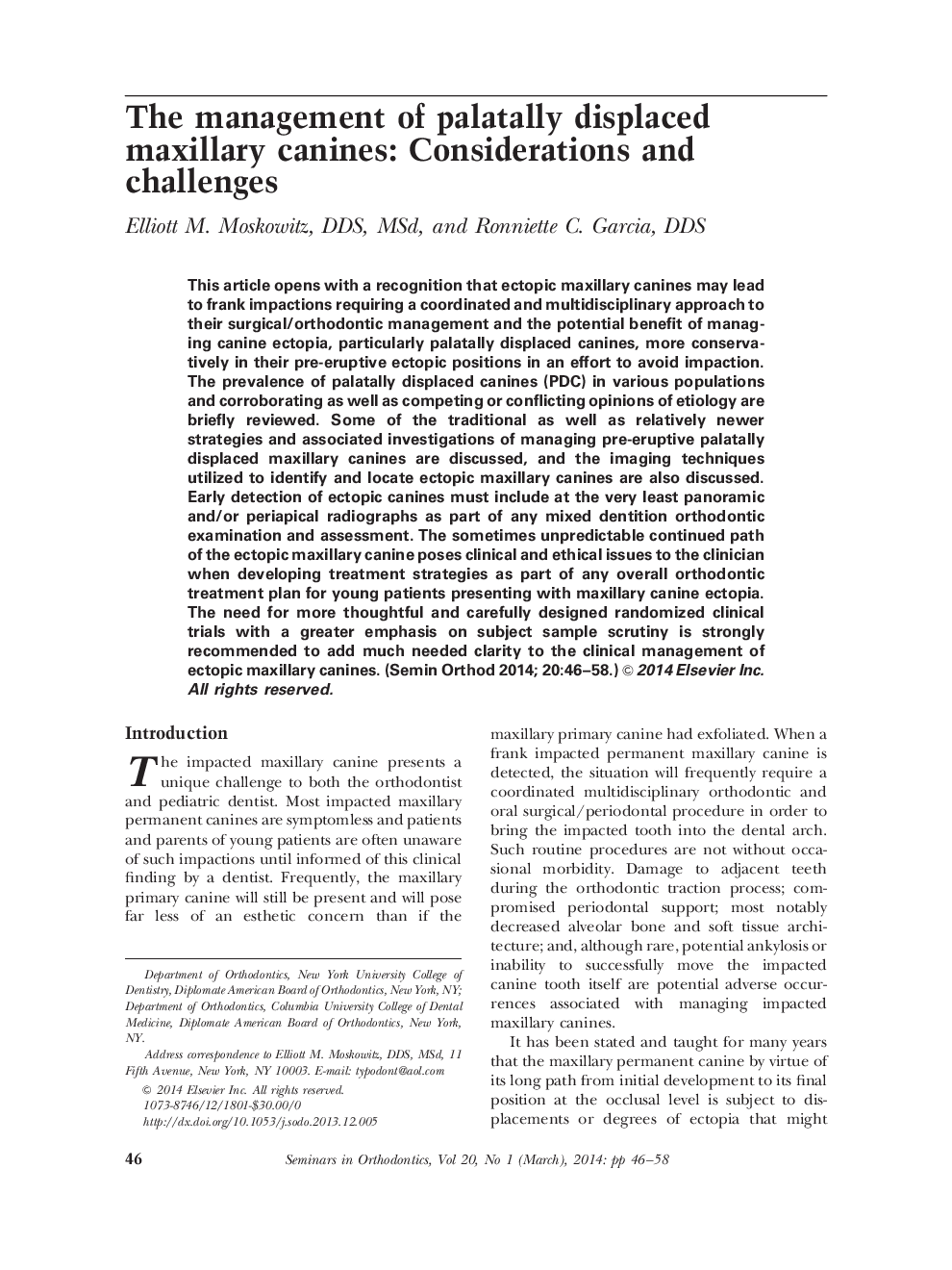| Article ID | Journal | Published Year | Pages | File Type |
|---|---|---|---|---|
| 3175466 | Seminars in Orthodontics | 2014 | 13 Pages |
This article opens with a recognition that ectopic maxillary canines may lead to frank impactions requiring a coordinated and multidisciplinary approach to their surgical/orthodontic management and the potential benefit of managing canine ectopia, particularly palatally displaced canines, more conservatively in their pre-eruptive ectopic positions in an effort to avoid impaction. The prevalence of palatally displaced canines (PDC) in various populations and corroborating as well as competing or conflicting opinions of etiology are briefly reviewed. Some of the traditional as well as relatively newer strategies and associated investigations of managing pre-eruptive palatally displaced maxillary canines are discussed, and the imaging techniques utilized to identify and locate ectopic maxillary canines are also discussed. Early detection of ectopic canines must include at the very least panoramic and/or periapical radiographs as part of any mixed dentition orthodontic examination and assessment. The sometimes unpredictable continued path of the ectopic maxillary canine poses clinical and ethical issues to the clinician when developing treatment strategies as part of any overall orthodontic treatment plan for young patients presenting with maxillary canine ectopia. The need for more thoughtful and carefully designed randomized clinical trials with a greater emphasis on subject sample scrutiny is strongly recommended to add much needed clarity to the clinical management of ectopic maxillary canines.
